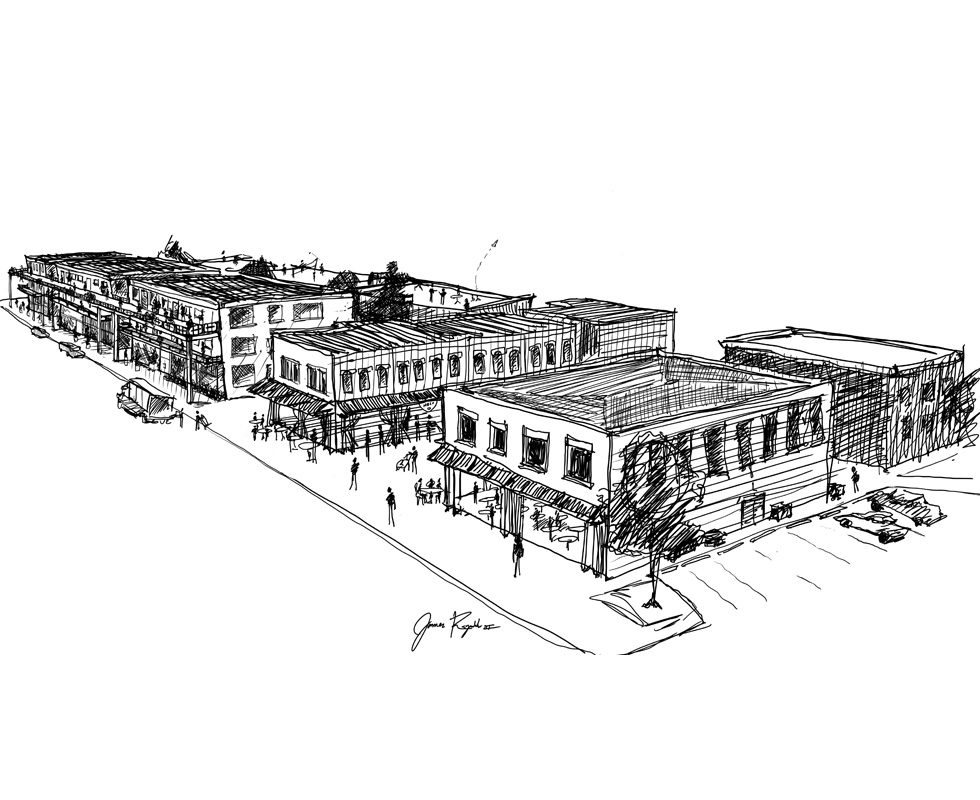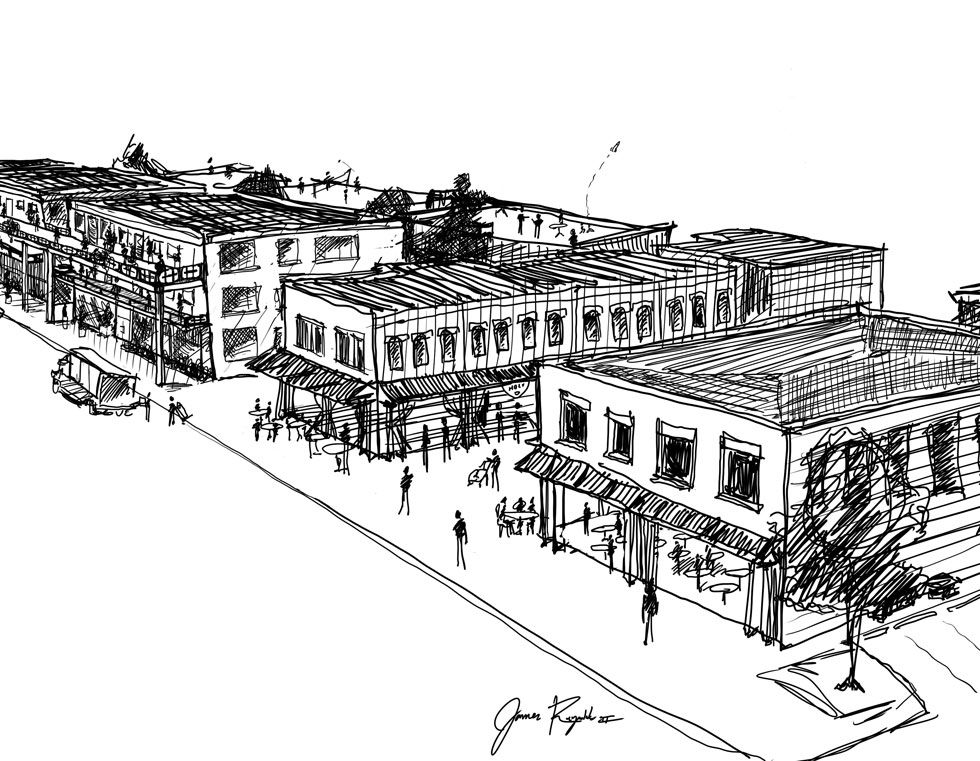This article was scraped from Rochester Subway. This is a blog about Rochester history and urbanism has not been published since 2017. The current owners are now publishing link spam which made me want to preserve this history.. The original article was published December 07, 2014 and can be found here.
![Development proposals for the empty lots along Charlotte were due to the City on Friday. An independent design shop called Pebble-stream came up with this proposal but couldn't find an interested developer before the deadline. [IMAGE: James Reynolds, Pebble-stream]](https://senseofplace.dev/content/images/photos/pebble-stream-charlotte-street-plan-01.jpg)
The following is a guest post submitted by Mary Scipioni of Pebble-stream . Submit your story today .
Hello [RochesterSubway.com],
As you know, the City of Rochester is requesting development proposals for the empty lots along Charlotte Street. I am sending you a plan that I worked on with a couple of designers. Unfortunately, we have not been able to connect with any interested developers, and proposals were due December 5th.
The following design is by Pebble-stream ; we wanted to share it with our friends who believe in the future of this community...

This proposed plan for the Charlotte Street

lots was developed with the scale and character of the neighborhood in mind. We love high rises, but don't think such a building would fit in here.
![The design consists of a row of three-story structures housing offices on the ground floor and condos or rentals above. [IMAGE: James Reynolds, Pebble-stream]](https://senseofplace.dev/content/images/photos/pebble-stream-charlotte-street-plan-03.jpg)
Our design consists of a row of three-story structures housing offices on the ground floor and condos or rentals above. The second floor has a balcony the width of each building, and the third floor has a balcony that spans all three structures, like a mini High Line

. Folks living there will be able to place potted plants in front of their space, but can freely circulate along the elevated, south facing passeggiata, look around the neighborhood and possibly visit their neighbors.
![A plan view of the proposed development for Charlotte Street. [IMAGE: Pebble-stream]](https://senseofplace.dev/content/images/photos/pebble-stream-charlotte-street-plan-04.jpg)
The ground floor would have a state-of-the-art optical fiber system with beefed-up, flexible electrical to favor high tech start-ups. There are three micro-lots with eight spaces each for the office tenants.
![Residents will be able to obtain garage space, entering and leaving from Haags Alley. [IMAGE: Pebble-stream]](https://senseofplace.dev/content/images/photos/pebble-stream-charlotte-street-plan-06.jpg)
The residents will be able to obtain garage space, entering and leaving from Haags Alley. That's where their garbage would be collected, too. That's what alleys are for. Above the garage, there will be utility studio apartments for students or artists, and these will not have guaranteed parking.
![The pedestrian way aligned with Winthrop Street would be lined with small shops for pop-up or longer term businesses, as well as cafes, sandwich shops, and a space for a performance stage. [IMAGE: Pebble-stream]](https://senseofplace.dev/content/images/photos/pebble-stream-charlotte-street-plan-05.jpg)
The pedestrian way aligned with Winthrop Street will be called Winthrop Mall. It is lined with small shops for pop-up or longer term businesses, as well as cafes, sandwich shops, etc.
A couple of locations for Jazz Fest stages are shown.
The green space breaks up the impervious surfaces, and the majority of it has a good southern exposure. Three brick patios surrounded by plantings are available for all of the residents and office tenants. The entry drives and turnaround pads are also in brick, in keeping with the neighborhood's character. The deep balconies and the Charlotte St. side and awnings on the Winthrop Mall shops create an intimate, human scale that makes you want to hang out at one of the cafe tables.
The parking area to the east can initially host 40 parking spaces. A "Phase Two" building could be placed along Pitkin Street, with shops at ground level for half the depth, and offices, then residences, above. Ten covered spaces will be maintained below the structure, at the current grade.
![This is (was) a brownfield, so the Corrective Action Plan must be followed during and after construction. [IMAGE: Bing]](https://senseofplace.dev/content/images/photos/pebble-stream-charlotte-street-plan-07.jpg)
This is (was) a brownfield, so the Corrective Action Plan must be followed during and after construction. Vapor barriers must be used under structures, as well as ventilation for the volatile organic compounds the may still emerge from the soil. The VOCs have to be monitored during construction, and work could be stopped if there is a risk of exposure.
That is why a careful analysis of contingencies needs to be done before sitting down with the City to close the deal. Perhaps a contingency fund could come right out of the sale price, with an agreed-upon second installment paid in full after construction. Let's face it, Rochester developers don't like to take risks.
Tax incentive funding could be used to help out with the costs. The City could float bonds to us, and we would get our returns after the tax abatement honeymoon is over. The more stakeholders, the better.
This plan may seem modest, but the detailing is key. Good clean architecture, and simple open spaces inside. And no peaked roofs, please, in the East End. That's Charlotte Village.
Thanks for providing us with the opportunity to share our design.
Best regards,
Mary Scipioni and the Pebble-stream team
* * *
About Pebble-stream

is an open network design consulting firm that specializes in landscape architecture, urban design, and planning. We assemble teams for each project according to needs and expertise, and sometimes "plug in" to partner firms. This is a lean,low overhead model that provides more value for our clients and greater engagement by our team members. You can follow Pebble-stream on Facebook

.


